Digital Signage: Linking communications from software to hardware
by all | 24 March 2017 10:22 am
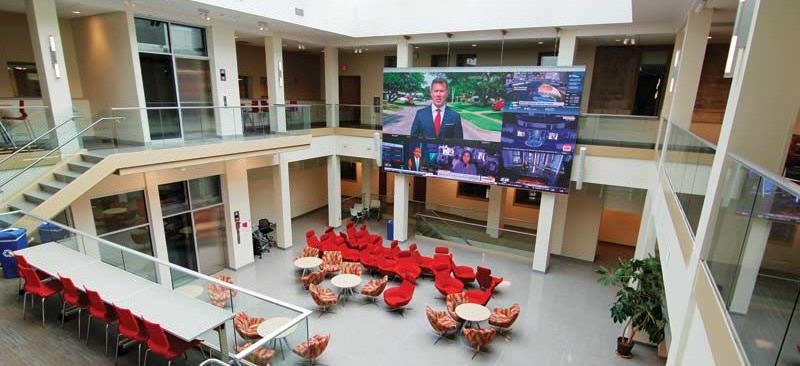 [1]
[1]Photos courtesy NanoLumens
By Stephen Montgomery
Digital signage can be found almost everywhere today. According to research by ElectroniCast Consultants, the value of the worldwide digital signage display market—including all associated hardware, software and application-specific services—reached US$17.6 billion in 2016. Given the scale of the industry, it is no wonder there is a wide variety of communication links between the hardware and software it uses.
Hardware components include not only the display devices themselves, but also the compact personal computers (PCs) that serve as media players and system-on-a-chip (SoC) interfaces. Software includes the hardware’s operating system (OS) and the content management system (CMS) that governs what appears on a display (see page 38), allowing it to be changed frequently. Immediate communications between transmitters and receivers can be achieved wirelessly for short links, with copper wire for medium links or fibre optic cable for links anywhere up to 20 km (12.4 mi).
The choice of components will depend on the location of the digital signage deployment. Outdoor installations may be on- or off-premise, while indoor applications range from office buildings and educational institutions to hotels, bars, restaurants, shops and malls to airports, train stations and bus terminals.
Displays
The most common types of display technology for digital signage are liquid crystal displays (LCDs) and light-emitting diode (LED) screens, but other options include interactive touch screens, digital projectors, transparent or ‘mirror’ organic LED (OLED) displays and even quantum dot (QD) displays. All can be used to clearly convey digital images, video, streaming media and information, but some support more innovative ways of doing so.
In May 2016, for example, the first commercial installation of a Samsung integrated digital signage mirror display was undertaken at a beauty salon in Seoul, South Korea. As shoppers approach the display—which is a mirror, but with a transparent OLED display mounted onto it—its embedded proximity sensor activates a transition from traditional promotional content to a mirror image. This way, a single panel within the salon can provide both the visual clarity of a standard mirror and the informative customer experience of digital signage.
The display’s components include an SoC semiconductor and a multiple-core central processing unit (CPU) with 8 GB of storage to support Samsung’s MagicInfo CMS, which brings up advertising messages based on customers’ proximity and dwell time. In a clothing store, for example, a man looking in the mirror while trying on suits might also see promotional content for shirts, ties, shoes and other related items.
One of the advantages of the solid-state nature of media players and other hardware components, including screen enclosures, is their resistance to damage.
“Shatter-proof modules are particularly useful with regard to digital signage vandalism incidents,” says Nathan Remmes, vice-president (VP) of corporate development for LED display manufacturer NanoLumens. “While such incidents are rare, they can represent a major concern for network operators.”
 [2]
[2]Indoor digital signage environments include train stations (left), casinos (middle) and educational institutions (right).
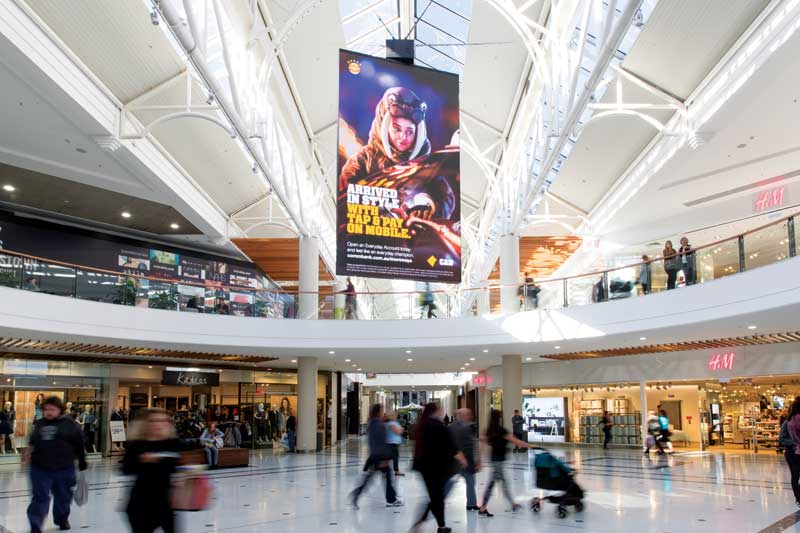 [3]
[3]DOOH advertising has evolved significantly in recent years. This display is double-sided and rotates for optimal visibility.
DOOH advertising
Out-of-home (OOH) advertising, by definition, reaches consumers while they are outside their homes. Popular formats include street-level posters, billboards and transit shelter and vehicle ads, among others, and the industry’s revenue has grown steadily year-over-year.
“OOH continues to outperform most traditional media because, in today’s world of clicks, likes, and page views, it’s the real thing,” says Stephen Freitas, chief marketing officer (CMO) for the Outdoor Advertising Association of America (OAAA). “It offers real-life impact that can’t be blocked, skipped or viewed by bots instead of real people. It extends the reach and frequency (R/F) of integrated ad campaigns and drives mobile, social and digital engagement better than any other advertising medium.”
Fittingly, digital OOH (DOOH) advertising has developed significantly in recent years, with dynamic content distributed across digital billboards, stand-alone screens, kiosks and interactive touch screens in public places. With place-based digital signage networks, operators can combine DOOH advertising with local facility information, event listings, social media feeds and other relevant content.
Digital billboards are very large LED screens, with content typically updated every four to 10 seconds, depending on ad contracts, local regulations and codes and standard industry practices. For similar reasons, they generally comply with brightness limitations and do not feature animation, flashing, scrolling or full-motion video.
Off-premise digital billboards are those installed in highly visible locations for traffic and the public, usually alongside roadways, rather than on the property of a promoted business. Indeed, they are intended to display messages from multiple advertisers, not just a single source.
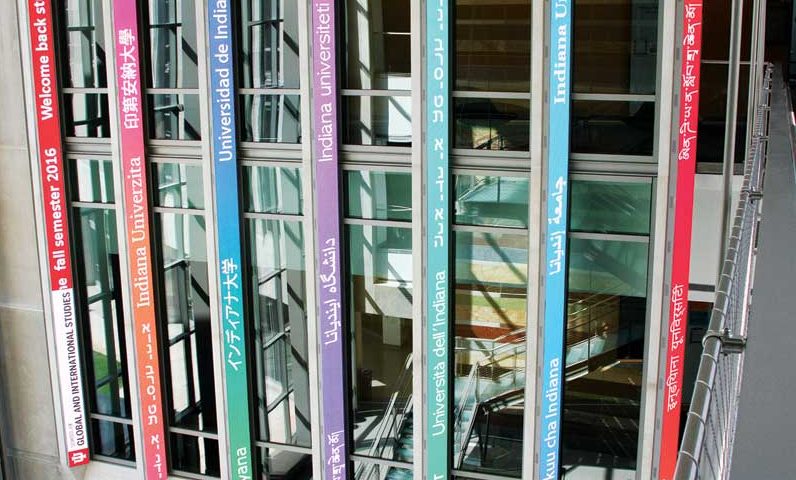 [4]
[4]The management of content in software must be customized to the format in terms of the displays.
On-premise digital billboards, on the other hand, are located on the premises of businesses that use them exclusively to directly promote their own products and/or services. Depending on local zoning and regulations, these signs might be allowed to feature full-motion video. Given these differences, they are not considered part of the DOOH advertising industry.
DOOH has proven a powerful promotional tool for local, regional, national and international advertisers, allowing clear communication of the right message at the right time to the right audience. Content can be changed to better align branded marketing with consumer trends. The medium has also proven useful for travellers and communities, since its real-time message delivery capabilities are ideal for vital public emergency announcements.
Besides on-premise digital billboards, it is worth mentioning the same LED technology built to withstand outdoor weather conditions has been migrating to indoor spaces, as well. Arenas, stadiums and other large entertainment and sport venues have increasingly installed giant video boards from the same manufacturers that serve the DOOH advertising industry.
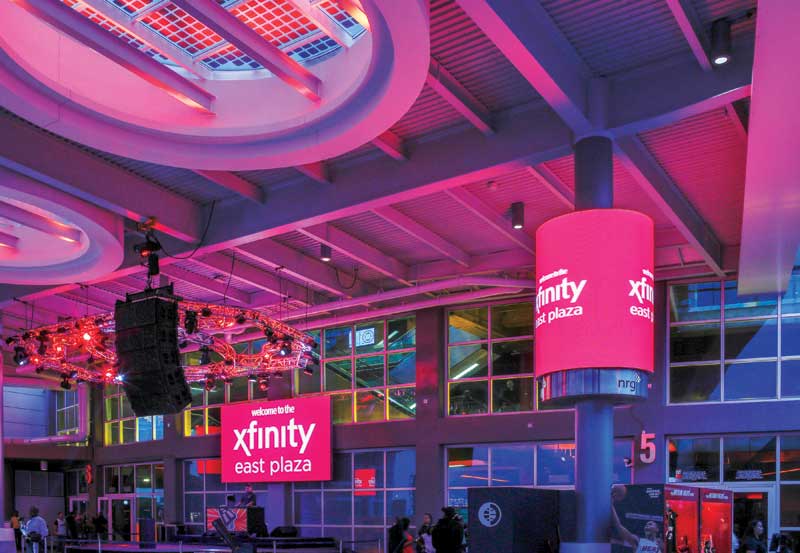 [5]
[5]LEDs can be wrapped around a pillar to create a cylindrical digital display.
Software platforms
Digital signage has become popular with not only marketers and advertisers, but also system administrators, because it allows them to source, personalize, manage and control real-time content through a variety of media applications. Centralized CMS software is key to customizing and refining messages in a unique, personalized way for a specific audience, location and time.
Further, digital signage software platforms have been expanded to incorporate ‘smarter’ capabilities like facial recognition, proximity awareness (as in the mirror screen mentioned earlier) and other monitoring features.
Indeed, today there are hundreds of digital signage software providers, with products covering a wide range of capabilities. In some cases, they provide stand-alone, application-specific software, e.g. for ad management. In others, software is made available directly from the manufacturer of the hardware. And yet another option is to offer subscriptions to cloud-
based, provider-hosted software over the Internet, i.e. through a software-as-a-service (SaaS) business model.
There is also software customized for particular types of clients. Flight information display (FID) software, for instance, is specifically designed for the central management of digital content for screens throughout an airport, usually with the capability to showcase both flight information and advertising.
In some cases, FID software is now being made smarter with features that recognize and respond to dynamic situations without requiring human monitoring, so as to better suit the needs of its audience. Screens that show directions and walking distances for flight gates, for example, can be enhanced by also incorporating waiting times at security check points, based on the number of people currently in each lineup.
This type of smart software has many other applications beyond airports. Digital signage along roadways can be updated to detect congestion levels and respond with alert messages as control measures, for instance, while networks in large office complexes, college campuses and shopping centres can be triggered to let tenants and visitors know about emergency situations, such as a fire, severe weather or hostile encounter, and offer relevant tips. Digital signage is well-positioned as a vital communications channel, as it can share breaking news and location-specific details more quickly than any other medium.
“Today’s digital signage SaaS platforms can seamlessly combine real-time diagnostics and support functions with a variety of services, content sources and apps, accessible through one portal, instantly, from anywhere in the world,” says NanoLumens’ Remmes.
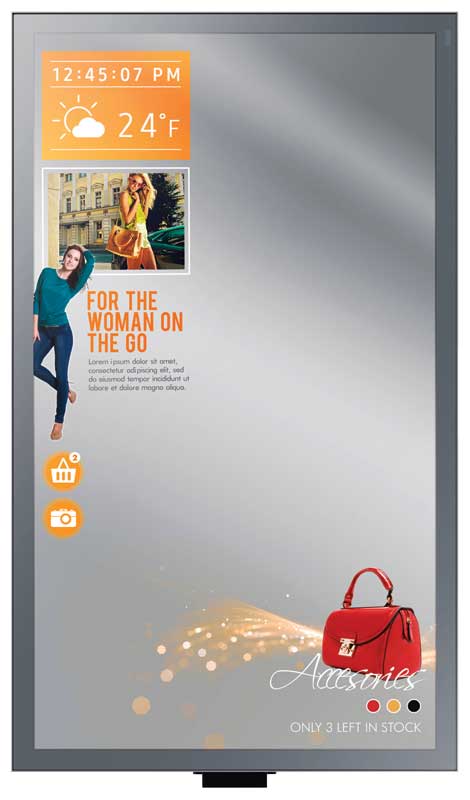 [6]
[6]Samsung’s concept for combining a mirror with a transparent OLED display, seen here in an early rendering, became a physical reality in May 2016.
Photo courtesy Samsung
Users can remotely view all of the screens in their network from a single dashboard or ‘drill down’ to a specific display and find out more information about an individual component. They can also arrange for proactive notifications.
Integration
Such examples show how the medium of digital signage relies on the integration of hardware and software to be (a) relevant to its audience and (b) ‘measurable’ by its operator. That is to say, hardware like cameras and sensors can feed data into the software both to update on-screen content dynamically and to get a clearer understanding of how many people are seeing and reacting to the content.
“In addition to environmental sensors, cameras can be added to digital displays and accessed via software platforms to support facial recognition applications,” says Remmes.
Another trend has been the strategic placement of smart ‘beacons’ alongside digital signage. These are low-powered transmitters equipped with wireless Bluetooth connectivity that can communicate with passersby via their smartphones. In a retail setting, for example, this arrangement provides an opportunity to interact with customers, based not only on their having entered the store, but also on the specific aisle or fixture they may happen to be passing at the time.
Indeed, beacons are the first proximity technology that is supported by all mobile phone platforms, allowing them to deliver context-appropriate messages to many consumers. They also have the potential to make it easier for marketers to understand their customers, including their preferences, demographics (e.g. age and gender) and recent purchase history. As they become more commonly deployed, they could revolutionize the way people interact with public spaces.
Stephen Montgomery is president of international business expansion for ElectroniCast Consultants, which forecasts market trends in network communications, integrated circuits, fibre optics, wireless communications, light-emitting diodes (LEDs) and advanced photonics. For more information, visit www.electronicast.com[7].
- [Image]: https://www.signmedia.ca/wp-content/uploads/2017/03/digital_Indiana-University-Media-School-e1490210823829.jpg
- [Image]: https://www.signmedia.ca/wp-content/uploads/2017/03/edit1-1.jpg
- [Image]: https://www.signmedia.ca/wp-content/uploads/2017/03/digital_Charlestown-Square.jpg
- [Image]: https://www.signmedia.ca/wp-content/uploads/2017/03/digital_Indiana-Global-and-International-Studies-Building-e1490211385487.jpg
- [Image]: https://www.signmedia.ca/wp-content/uploads/2017/03/digital_AmericanAirlines-Arena.jpg
- [Image]: https://www.signmedia.ca/wp-content/uploads/2017/03/digital_LH32MLEPLSC-CI_002_FrontFortrait_Black.jpg
- www.electronicast.com: http://www.electronicast.com
Source URL: https://www.signmedia.ca/digital-signage-linking-communications-from-software-to-hardware/